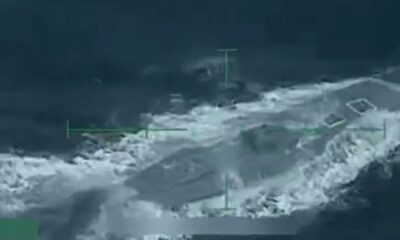Science
Scientists Unveil Non-Contact Method for Detecting Fentanyl

Researchers at the U.S. Naval Research Laboratory (NRL) have developed an innovative method to detect trace levels of fentanyl, a potent synthetic opioid. Collaborating with the Global Forensic and Justice Center at Florida International University (FIU), the team has created a silicon nanowire (SiNW) array designed to concentrate chemical vapors, enabling handheld detection devices. This advancement provides first responders with a quicker and safer means to identify fentanyl without direct contact with the substance.
Detecting fentanyl has long posed challenges due to its high potency and the risks associated with exposure. Traditional methods often require physical interaction with the substance, which can be hazardous for emergency personnel. The new approach utilizes a SiNW array that captures and amplifies chemical signals in the air, allowing for effective detection through a non-contact method.
The implications of this breakthrough are significant. First responders frequently encounter situations involving fentanyl, which can have lethal consequences with even minimal exposure. By employing this non-contact detection method, they can minimize risks associated with handling the drug while ensuring rapid identification.
Innovative Technology Enhances Safety for Responders
The technology behind the SiNW array represents a leap forward in the field of chemical detection. By focusing on vapor concentrations, it allows handheld devices to detect trace amounts of fentanyl and other synthetic opioids quickly. This efficiency can prove critical in emergency settings, where time is of the essence and the potential for harm is high.
This method not only enhances the safety of first responders but also improves the overall response to opioid-related incidents. With the opioid crisis continuing to impact communities worldwide, effective detection methods are crucial for public health and safety. The NRL and FIU’s collaboration highlights the importance of research in addressing pressing societal challenges.
The findings of this research were recently presented, showcasing the potential of the SiNW array technology. By developing tools that facilitate rapid identification of dangerous substances, the team is contributing to safer environments for both responders and the communities they serve.
As the opioid crisis evolves, innovations like these are essential in combating the issues posed by synthetic opioids. The integration of advanced technology into emergency response protocols could redefine how first responders manage hazardous situations, ultimately saving lives.
In conclusion, the work of the NRL and FIU not only demonstrates a promising advancement in fentanyl detection but also emphasizes the ongoing need for innovative solutions in public health. With further development and deployment, this non-contact detection method could become a vital tool in the fight against the opioid epidemic.
-

 Entertainment3 months ago
Entertainment3 months agoAnn Ming Reflects on ITV’s ‘I Fought the Law’ Drama
-

 Entertainment4 months ago
Entertainment4 months agoKate Garraway Sells £2 Million Home Amid Financial Struggles
-

 Health3 months ago
Health3 months agoKatie Price Faces New Health Concerns After Cancer Symptoms Resurface
-

 Entertainment3 months ago
Entertainment3 months agoCoronation Street’s Carl Webster Faces Trouble with New Affairs
-

 Entertainment3 months ago
Entertainment3 months agoWhere is Tinder Swindler Simon Leviev? Latest Updates Revealed
-

 Entertainment4 months ago
Entertainment4 months agoMarkiplier Addresses AI Controversy During Livestream Response
-

 Science1 month ago
Science1 month agoBrian Cox Addresses Claims of Alien Probe in 3I/ATLAS Discovery
-

 Entertainment4 months ago
Entertainment4 months agoKim Cattrall Posts Cryptic Message After HBO’s Sequel Cancellation
-

 Entertainment2 months ago
Entertainment2 months agoOlivia Attwood Opens Up About Fallout with Former Best Friend
-

 Entertainment3 months ago
Entertainment3 months agoMasterChef Faces Turmoil as Tom Kerridge Withdraws from Hosting Role
-

 Entertainment4 months ago
Entertainment4 months agoSpeculation Surrounds Home and Away as Cast Departures Mount
-

 World3 months ago
World3 months agoCole Palmer’s Mysterious Message to Kobbie Mainoo Sparks Speculation











